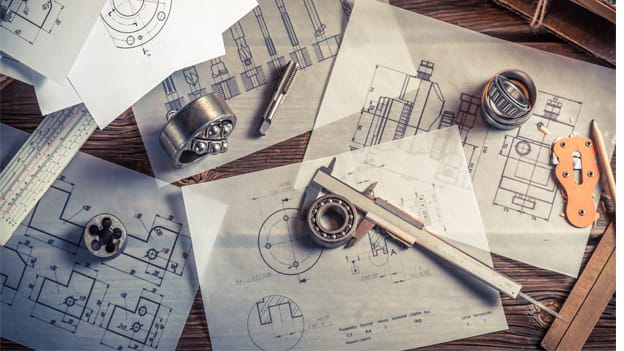HR needs to create a level playing field for women engineers

It is about empowerment and also about creating value. Indian women engineers are playing a key role in the technology domain, making great strides in the niche aerospace and defense sectors. They have been closely involved in developing mission critical hardware, weapons systems and futuristic aircraft with global OEMs. But the overall presence of women in terms of numbers in the field of engineering and innovation remains considerably low not just in India but in some of the world’s most developed economies. Does the problem lie in preordained perceptions about gender roles or in the lack of opportunities?
The Indian technology industry has always been male dominated with a ratio of just 1 female engineer for every 3 male engineers, as researched by hiring firm Belong.co. According to a report by a Massachusetts Institute of Technology (MIT) sociologists, negative group dynamics experienced by women during team-based work projects make the engineering profession less appealing to women. The study also found that women feel ‘marginalized’ and ‘disillusioned’ during internships and team-based activities where men are offered more challenging opportunities and women are sidelined to managerial roles. As a result, many women scholars drop out of college or do not pursue the profession after graduation. As a validation of this theory, the Indian technology industry today has only 26% women in engineering roles.
Women engineers are under-represented in almost every engineering stream, but more acutely in mechanical engineering. The gender ratio is skewed right from the undergraduate level. So much so that in the once popular engineering stream of education in India, 72% of the 11 lakh applicants in the 2017 JEE exam were boys. The Ministry of Human Resource Development (MHRD) found a 40% difference in the enrollment of boys and girls in B.Tech and BE programs this year.
Going by previous statistics of the MHRD, out of the 20 lakh students who enrolled for engineering courses in 2015-16, only 28.5% were female. Which brings us to a pertinent question of why women are shying away from engineering fields and what can be done to increase the percentage of women in the engineering profession?
According to a study done by Girls in Technology in 2017, 39 percent of women engineers are unemployed. Which goes to show that gender ratio and sensitivity paints a dismal picture in the job market. Traditionally, engineering jobs have been extremely demanding, involving hands-on physical work for long hours. Many women engineering graduates who come face to face with these expectations on the job are discouraged, leaving employers reluctant to hire female engineers.
In the global context, the study found that women in engineering jobs account for less than 22 percent and only 8 percent make it to the boardrooms. Some of the reasons cited for this were lack of resources, accessibility to opportunities and limitations in terms of organizational flexibility (moving to other locations for work and growth, time, etc). Other underlying factors attribute the gender ratio inconsistency to lack of mentorship and inspiring role models for women in the industry and demands made on women to maintain a balance between work and family life.
According to McKinsey, workplaces with gender diversity perform better financially. It is for companies to create a collaborative environment with equal opportunities driven by performance and not by gender dynamics. Organizations must inculcate a safe and egalitarian culture within the workspace to encourage innovation and facilitate talent retention. An ASSOCHAM India study has revealed that the confidence of working women has been shaken in recent times due to an increasing spate of violence and harassment against women. For this, organizations need to have stringent laws in place against workplace harassment and must be quick to prevent and preempt workspace persecution. The study further recommends extra safety precautions for women in job roles that call for odd working hours.
Another study conducted by Accenture Research brought to the fore the gender pay gap in India which is as high as 67 percent. Male employees, on average, earn USD 167 compared to USD 100 earned by women.
Keeping in mind that organizations will have a mix of young as well as experienced engineers, companies must be sensitive about the kind of programs and policies that are framed for their female employees. These policies should be framed to ensure that there is a work-life balance that creates a comfortable environment for women to work in.
Over the years, companies have been proactively taking gradual steps to diversify their workforce on the basis of talent. The results are promising. Many women engineers today lead projects with marquee companies for developing state-of-the-art capital equipment with global engineering giants.
At AXISCADES, 10% of the core engineering workforce comprises women, which is among the highest in the ER&D industry in India. Regular workshops and seminars are conducted for women employees to create awareness about their rights, with sessions for physical and mental well-being and also a forum encouraging them to come forward with their views for a better workplace environment.
Women are also given preference when it comes to working shifts. The company ensures that women are not subject to frequent late working hours and are refrained from working during the weekends or holidays. There is no differentiation when it comes to recruitment or salary pay structure for male and female engineers. Merit is the only differentiator and is given the highest priority to ensure that a competitive and innovative culture is promoted within the organization.
As India is on the verge of becoming a global ER&D hub, according to NASSCOM, and Asia is gradually leading the center of the ER&D revolution, there will be staggering competition in the engineering services sector in the coming years. To create more opportunities for aspiring young women engineers, the change has to begin at the education level, where the selection criteria can be modified to include parameters beyond test scores.
To foster the next generation of aspiring and capable women in our engineering workforce, it is crucial to provide mentorship to manage multiple work-life roles. With technology aided advancements, it is no longer a hurdle for women to break new ground in diverse areas of the engineering field. Closing the gender gap calls for inclusive workplace environments that utilize the talent and skills of women to alter the landscape of future innovation in engineering services in India.











